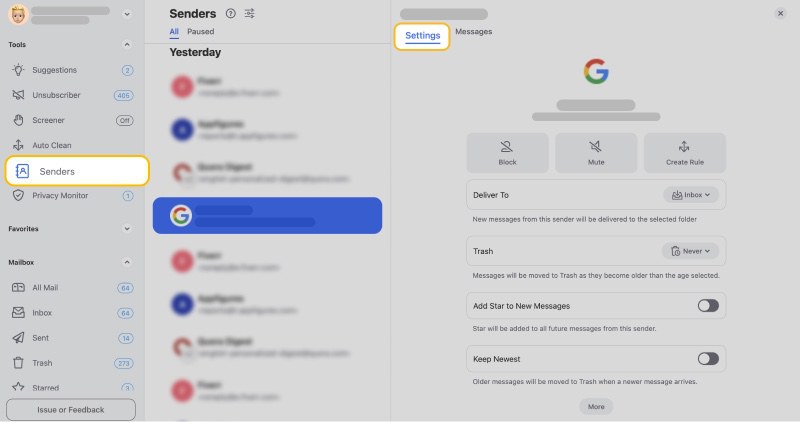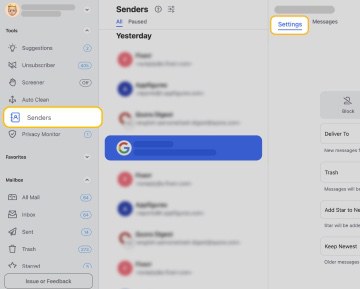3-Step Strategy to Mass Delete Emails in Outlook
To efficiently purge your Outlook inbox without losing important information, we highly recommend the following 3-step strategy:
- Delete or empty your folders: Are there any folders that contain nothing but useless messages? Get rid of them! They're the lowest-hanging fruit that you can easily eliminate to kickstart your inbox cleanup process.
- Eliminate messages of certain types: Next, focus on removing specific categories of emails. This could include deleting old emails that are no longer relevant or wiping notifications and alerts that have piled up over time.
- Mass delete messages from specific senders: Finally, we recommend you go through your inbox and bulk erase all messages from senders you don't care about anymore so that you can maintain Inbox Zero.
In the following sections, we explain how you can implement the above-described strategy using Outlook's native features as well as Clean Email, an inbox organizer app that lets you delete emails in mass across desktop, mobile, and web even more efficiently.
1. Delete or Empty Folders in Outlook to Mass Erase Emails
There are three folders that virtually all Outlook users can erase in bulk when organizing their inboxes: Deleted Items, Drafts, and Archive. To do so in Outlook for Windows and Outlook.com, you need to:
- Launch the Outlook app for Windows or visit the Outlook.com website.
- Right-click the folder you want to empty.
- Select the Empty folder option.
I personally like to empty my Drafts folder regularly because I have accidentally sent a quite embarrassing old draft in the past and don't want to repeat that mistake ever again.
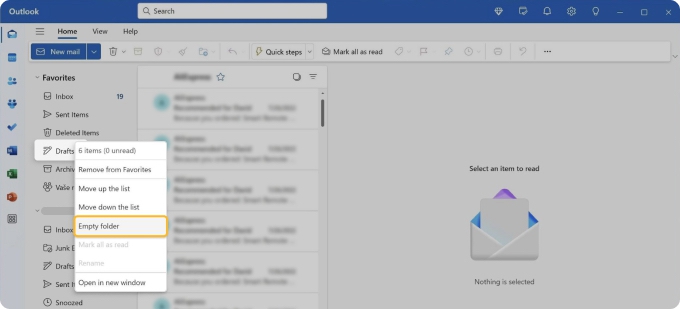
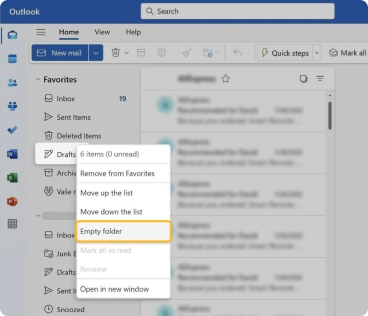
Outlook will ask you to confirm your decision to delete all items in the selected folder. It will then move them to the Deleted Items folder (or delete them permanently if you've selected the Deleted Items folder) without deleting the folder itself.
If your goal is to delete the actual folder, then you need to:
- Select a user-created folder (note: default folders like Deleted Items, Drafts, and Archive can't be deleted).
- Choose the Delete folder option.
- Confirm your decision to delete the folder and all messages it contains.

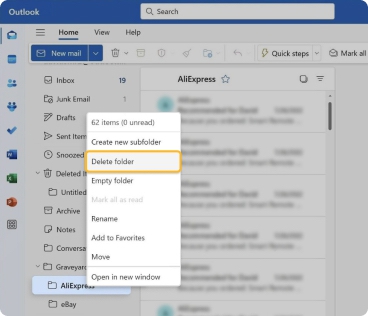
Unfortunately, neither the Empty folder nor the Delete folder option is available in the Outlook app for iOS and Android. Your best bet as a mobile user is to navigate to the folder you want to empty, tap and hold a message to select it, choose the Select All option, and then tap the Delete icon.
Alternatively, you can mass delete emails in Outlook on your phone (and any other mobile or desktop device) in just a few clicks using the Clean Email app:
- Download the app for iOS or Android and log in with your Outlook address.
- Select the folder you want to empty from the mailbox section in the left pane.
- Click Select and then Select All.
- Click the Trash button in the button toolbar. Alternatively, you can click More and select the Delete option instead to permanently remove all selected messages right away.


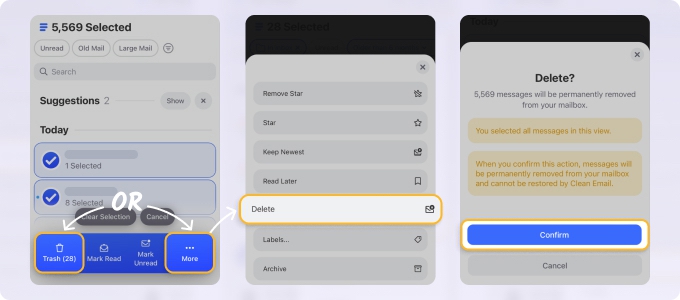
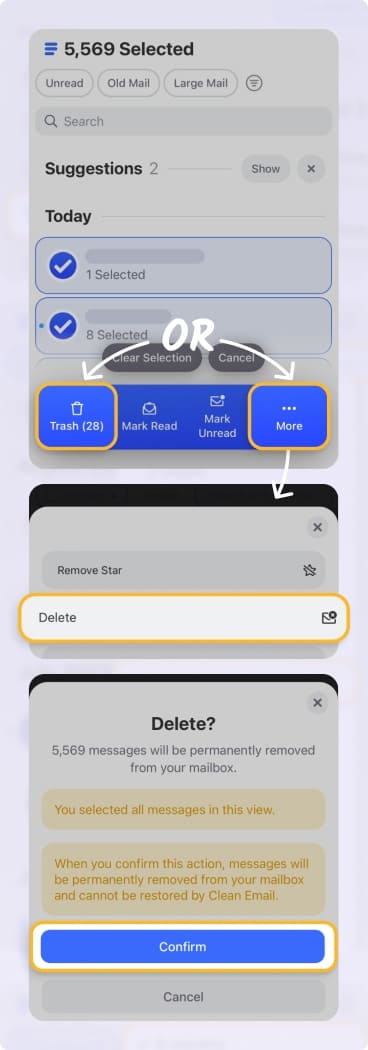
Now that the lowest-hanging fruit has been picked it's time to move on to more targeted approaches that enable you to delete masses of emails that share some common characteristics.
2. Eliminate Messages of Certain Types in Bulk
Once you've cleaned up your folders, the next step is to eliminate messages of certain types in bulk. Outlook provides two main features for this purpose: the search feature and the Sweep feature.
The search feature in Outlook allows you to find and delete emails based on specific criteria. Here's how to use it to delete mail in bulk on desktop and web:
- Launch the Outlook desktop app for Windows or visit the Outlook.com website.
- Move your cursor over the search bar and click the Filters icon on the right side.
- Specify your search filters and click Search.
For example, I frequently use search filters to find and clean old messages (let's say those received more than 1 year ago) that have been opened.
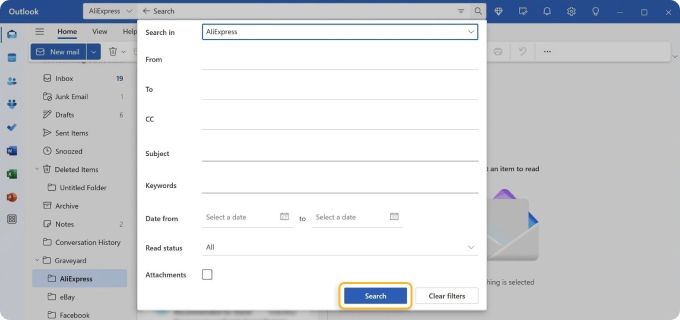

You can then select all found items (make sure to double-check that you've selected only messages you really want to delete!) and click the Delete icon.
The Outlook app for iOS and Android doesn't offer the same comprehensive search filters, so you're, once again, much better off using the Clean Email app instead. In fact, we recommend using Clean Email regardless of which device you're using because of how incredibly convenient it is to eliminate messages of certain types with it:
- Log in to Clean Email with your Outlook address.
- See the list of Favorites and Smart Folders in the left pane. These are pre-defined filters that you can apply to mass erase certain types of messages in bulk.
- To delete old mail, for example, you can click the Old Mail option in the Favorites section and then choose the age of messages you want to display.
- You can then click the Select button, then Select All, and, finally, Trash or permanently Delete the messages.
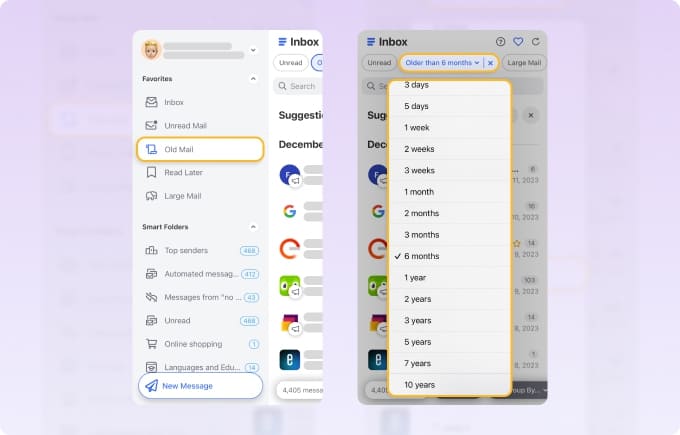
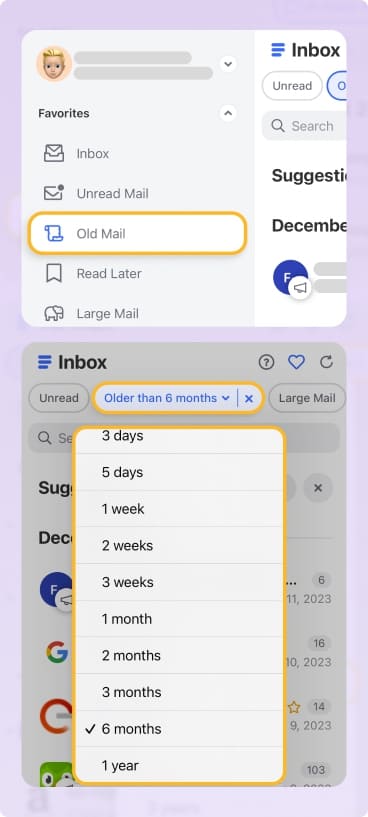
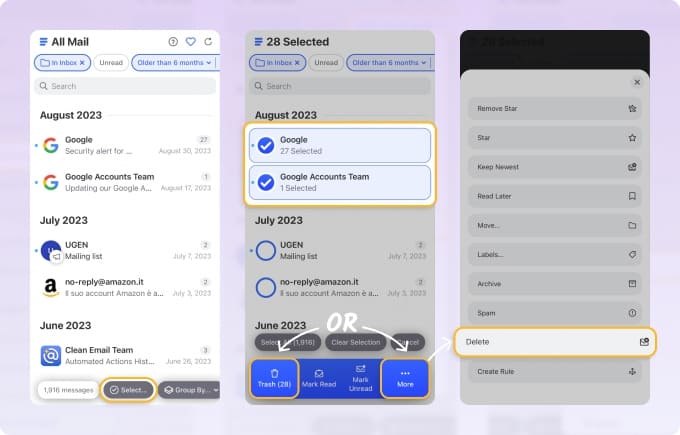
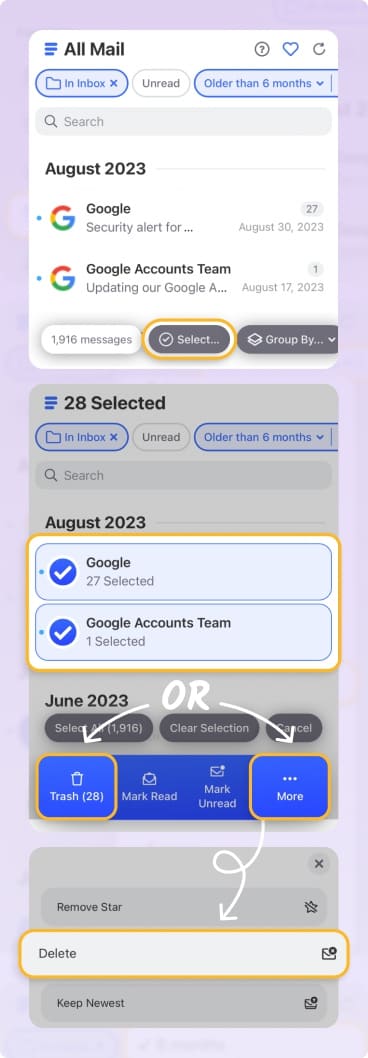
Repeat these steps with other pre-defined filters, and your inbox will be much cleaner in no time. You can then move on to the last step of our strategy, and mass delete emails in the Outlook app or Clean Email from specific senders.
3. Mass Delete Messages from Specific Senders
The final step in our strategy involves identifying and deleting en masse emails from specific senders, such as spammers, old colleagues, or newsletters you no longer read.
The good news is that the Outlook desktop app as well as the web version of Outlook (mobile users are out of luck again and have to rely on Clean Email) both come with a feature designed specifically to accomplish this objective: Sweep.
The Sweep feature in Outlook lets you quickly eliminate all messages from a particular sender, and you can even use it to create sweep rules that automate your inbox management. Here's how:
- Open the Outlook app for Windows or visit the Outlook.com website.
- Navigate to your inbox and select email(s) from a sender you frequently receive unwanted messages from.
- Click on Sweep in the toolbar.
- You will see options such as "Move all messages from the [folder name] folder" or "Always move messages older than 10 days from the [folder name] folder."
- Choose the desired option and confirm.
- Repeat the process for all other senders.


While the Sweep feature is powerful, it's limited to the desktop and web versions of Outlook (users have been complaining about this for a decade now!), and it also has only four options to choose from.
Fortunately, Clean Email offers a more versatile solution that works across all platforms, including mobile devices, and it groups messages by sender by default, so deleting mail from specific senders in bulk could hardly be any easier with it:
- Log in to Clean Email with your Outlook address.
- Select the Inbox option in the Favorites section.
- (Optional) You can customize how your inbox is grouped. By default, Clean Email groups by sender (default option), but you can also group by email address, sender domain, subject, date, recipients, or labels.
- Click the Trash button next to the sender you want to delete and confirm. Alternatively, you can choose Delete instead to skip the Trash folder.
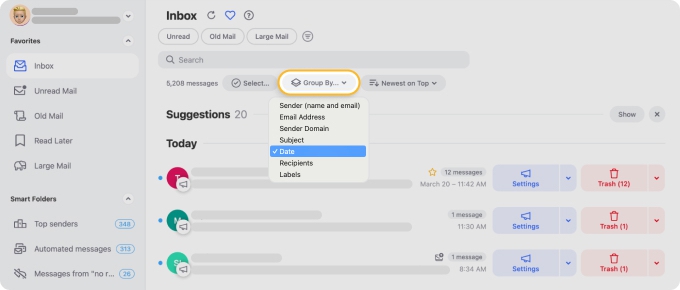
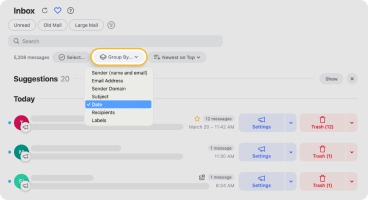
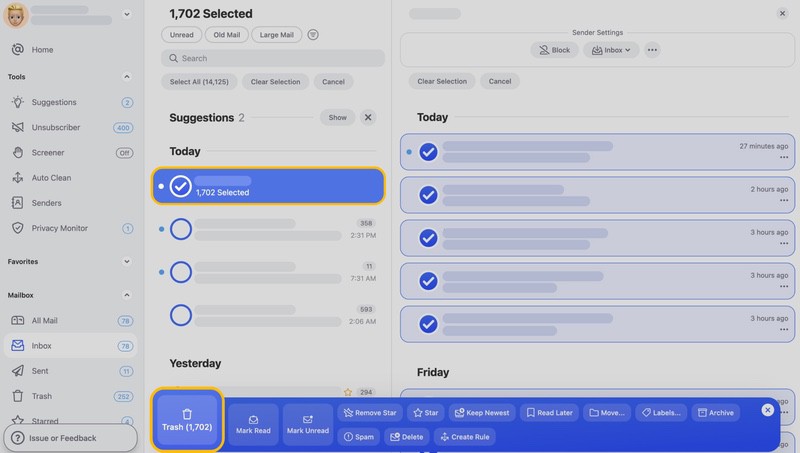
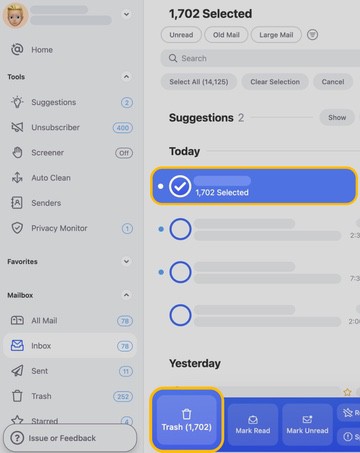
💡 Hint: If you primarily use a smartphone, you can set up automated email rules in Clean Email to automatically delete messages from specific senders or domains. Auto Clean offers unlimited customization, allowing you to tailor rules to your needs.
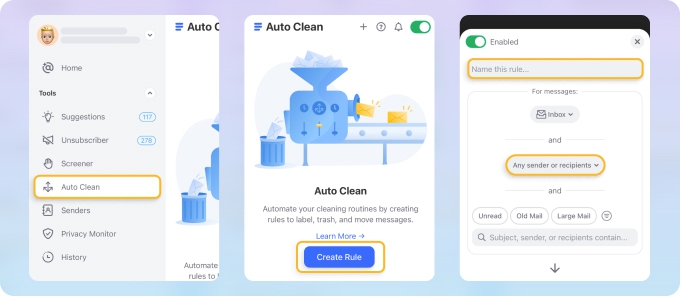
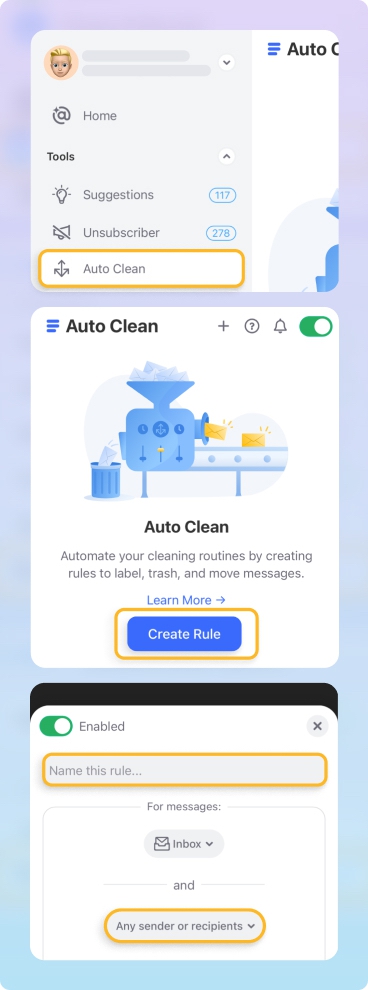
If you like the ability of the Sweep feature in Outlook to keep only recent messages, then you should also visit the Senders section in Clean Email. There, you can select any sender and activate the Keep Newest feature to automatically delete messages when new ones arrive.
